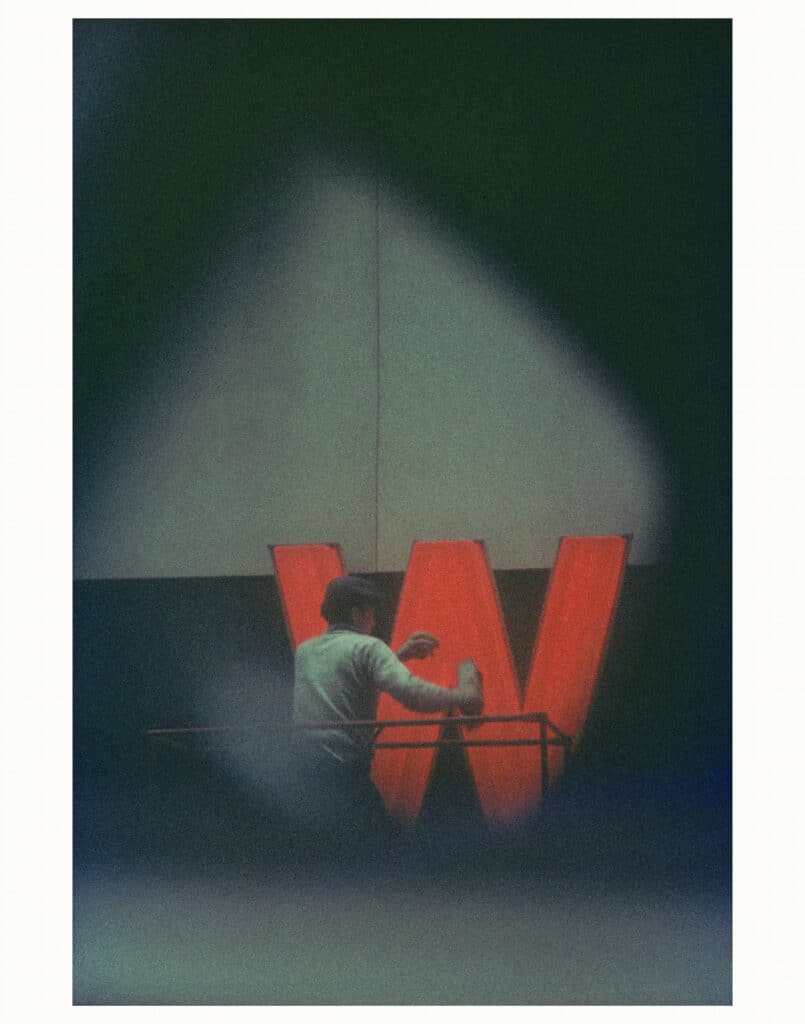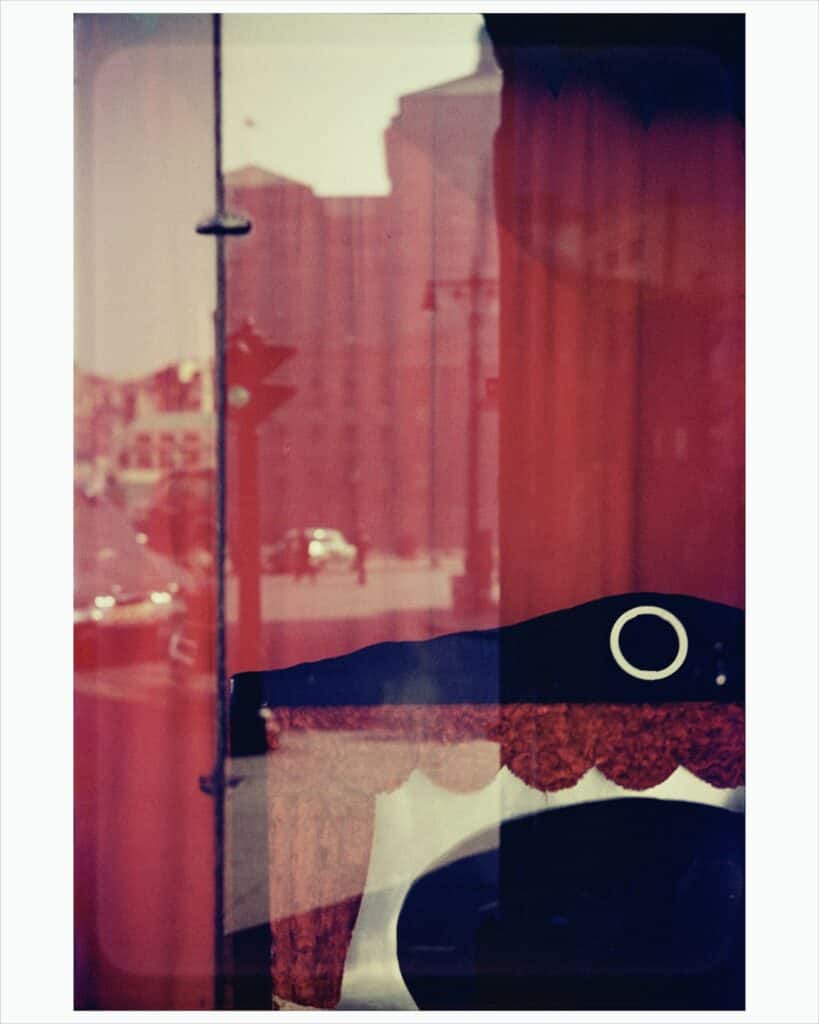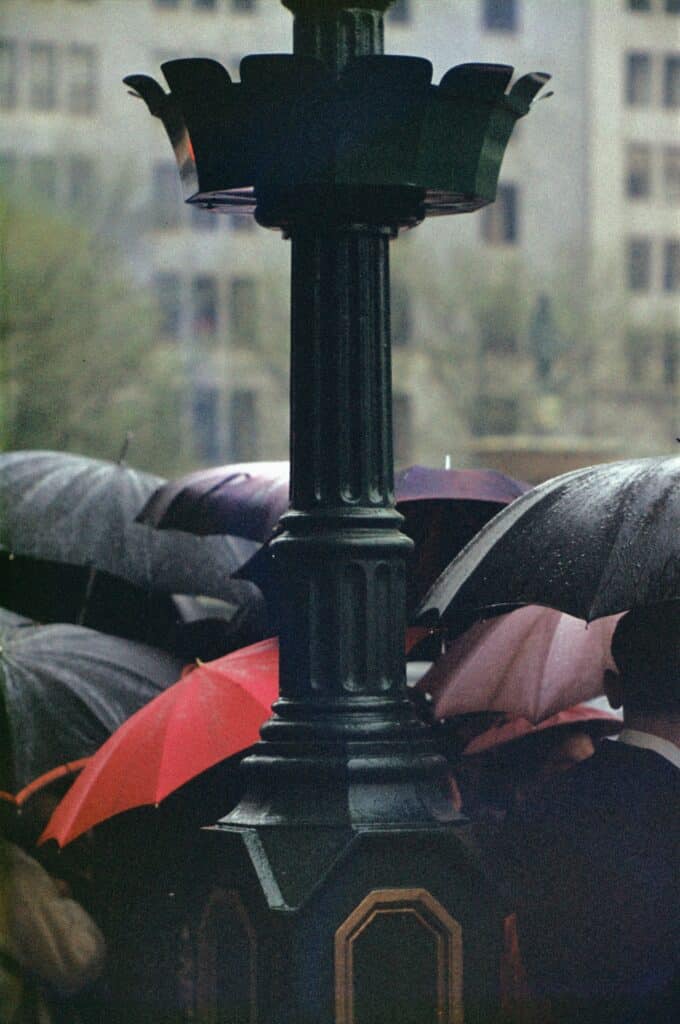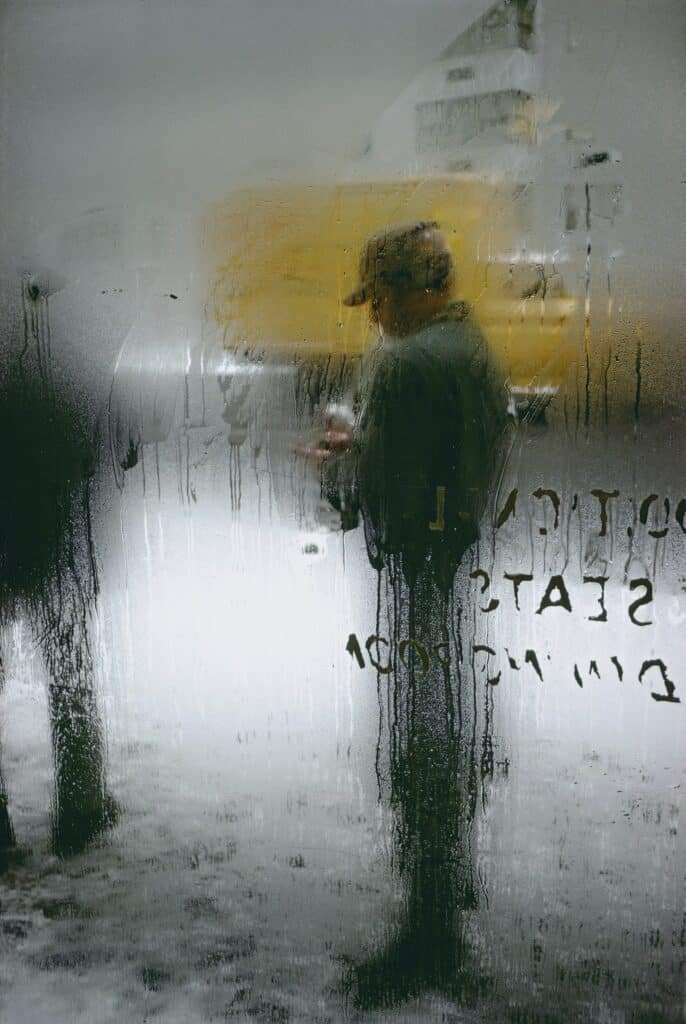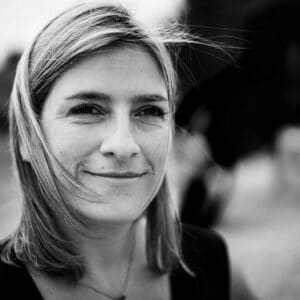“Sometimes I wake up in the middle of the night and I open a book by Matisse, Cézanne, or Sōtatsu…”
Saul Leiter 1
Saul Leiter spent over sixty years of his life and took most of his photographs in New York City’s East Village, near Saint Marks Place. Over the past years, the neighborhood has become strikingly Japanese, filled with izakayas, sobayas, ramen bars, and Japanese specialty supermarkets.
It seems very fitting. Indeed, I’ve always felt a closeness to Japan in Leiter’s work: the photographs in the snow; the women under their umbrellas; the improbable perspectives and revolutionary compositions reminiscent of Japanese woodblocks, ukiyo-e; the presence of the seasons and the verticality of the compositions evoking Japanese scroll paintings, kakejiku; the beauty he found in cracks and broken surfaces, in the unfinished, the worn out, the imperfect—the endurance of the elements and the effects of time. There is a “mono no aware” beauty to his photographs, in the color work especially—an acute awareness of the beauty of the transient, of the ephemeral, which might explain, in part, their magical and poetic essence.
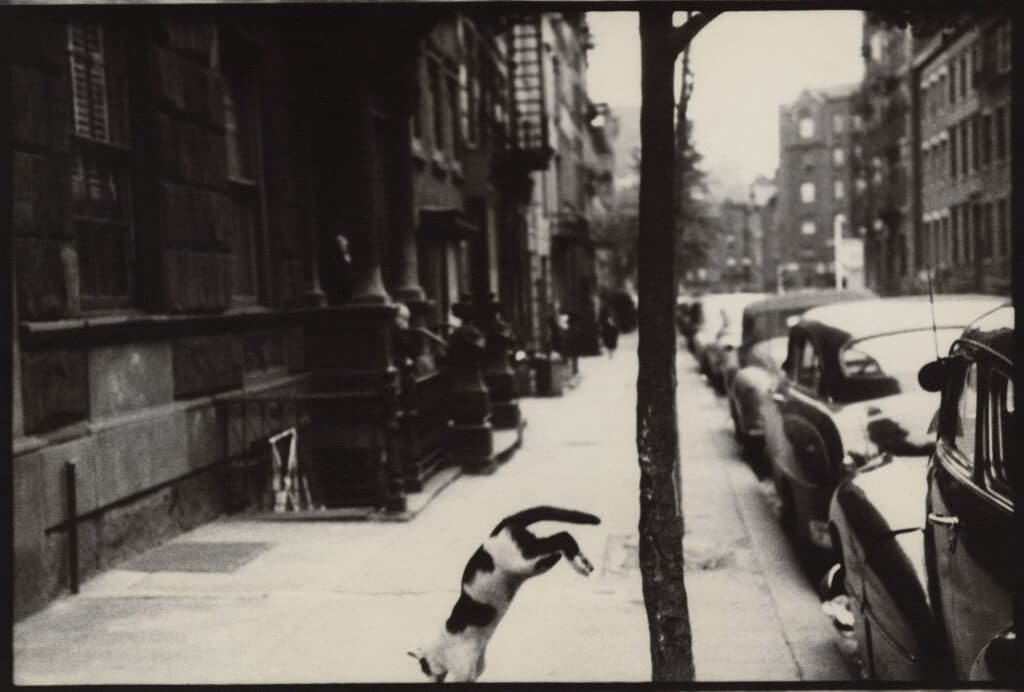
Leiter’s photographs were included in a group show at the Tokyo National Museum of Modern Art in 1953, but it was really in 2015, with the release of Tomas Leach’s documentary film In No Great Hurry, that the Japanese public met the artist and his work for the first time. With the exhibition Photographer Saul Leiter: A Retrospective, we very much hoped to continue and expand the conversation that Leach initiated in his very thoughtful film.
If compared to Japanese photographers, Leiter’s work would be close to that of Shōji Ueda or Masao Yamamoto, evoking the same poetic grace and delicateness. Leiter had an eye, a painterly eye, for the fleeting moment, for the seemingly banal, and for intimate moments of daily life. His atelier actually looked very much like a traditional Japanese house—the dark wood, the spectacularly tall glass window letting in the northern light, the very Japanese garden outside. The windows always held traces of dust and rain. As Junichirō Tanizaki wrote in In Praise of Shadows, “We love things that bear the marks of grime, soot, and weather, and we love the colors and the sheen that call to mind the past that made them.” 2
Leiter’s studio was filled with a myriad of little Japanese straw brushes that he would use to dust his cameras and boxes. Two framed etchings by Koryūsai were hanging on the walls. The studio had the warm feel of art collector Albert Barnes’s house, near Philadelphia, where paintings by Picasso, Degas, Matisse, Bonnard, and Vuillard hang from floor to ceiling and above every door. A painter himself, Leiter admired Vermeer, Matisse, Degas, Vuillard, and, above all, Bonnard. These artists—particularly Bonnard, with his unique tenderness—had a visible influence on Leiter’s work.
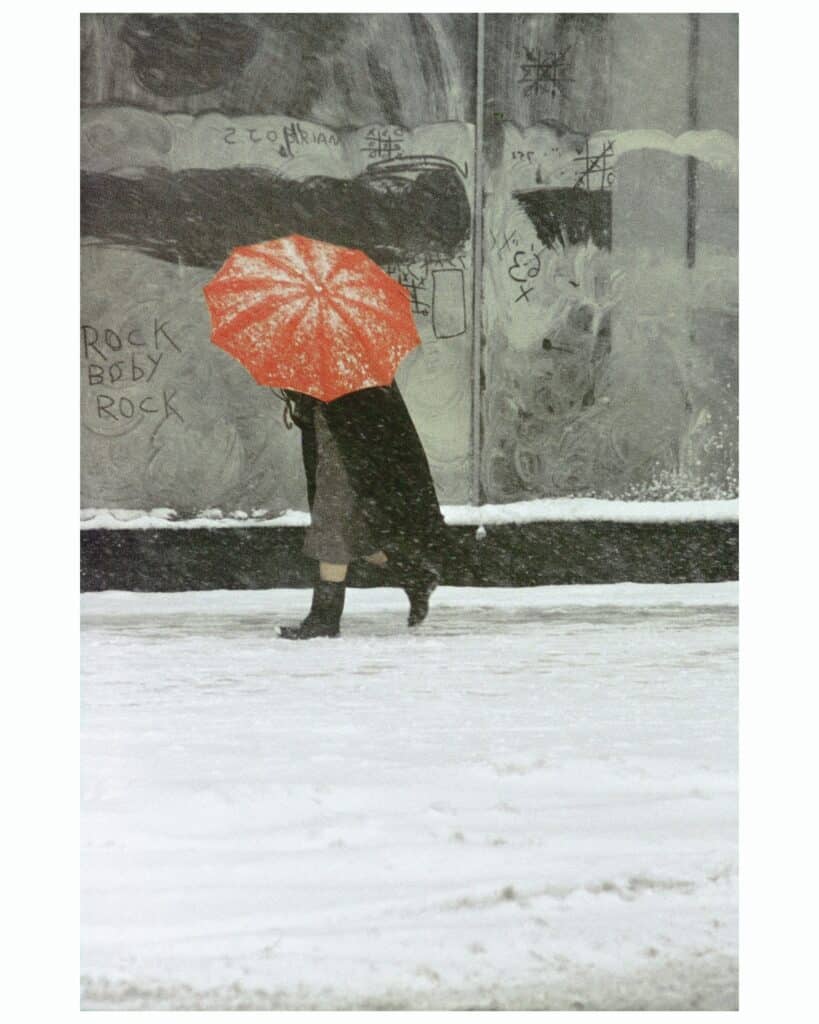
The birth of Impressionism was directly linked to the birth of photography. The new medium allowed for a detailed representation of reality, liberating some artists and pushing them to explore new subjects—such as plein-air, or outdoor scenes, and scenes of ordinary life—along with other ways of painting. The first private exhibition of the Impressionists actually took place in the Paris atelier of the legendary photographer Nadar, on April 15, 1874. Auguste Renoir and Edgar Degas organized the show, which also included the work of Paul Cézanne, Claude Monet, and Georges Seurat. This is when the term Impressionism was coined. Saul Leiter, a painter and a photographer, is a direct descendant of this artistic family.
Leiter’s style is unique—a rare and beautiful combination of Japanese and French influences runs through his entire body of work, from Hokusai to Bonnard. Indeed, his love for Japanese art might have stemmed, in part, from his passion for the French Impressionists and Post-Impressionists, and from their own love for Japanese arts.
“Japonisme” was the term used to describe the fascination with and craving for Japanese aesthetics that arose in the late 19th century, around the time of the Meiji Restoration, which allowed a broader dissemination of Japanese arts in the U.S. and Europe. The main craving was for ukiyo-e prints. The Impressionists and Post-Impressionists admired the revolutionary printmaking techniques—the craftsmanship—as well as the radically innovative compositions. Many of them became avid collectors and specialists of Hokusai, Utamaro, or Hiroshige.
Both Vuillard and Bonnard were part of a group called Les Nabis (“prophets” in Hebrew); Bonnard’s nickname was “Le Nabi très japonard”: the very Japanese Nabi. It is said that Bonnard found in ukiyo-e qualities that liberated him from Western conventions of color, form, and composition, and allowed him to create deeply intimate and spontaneous works.
It seems that Bonnard’s revelations were shared by Leiter, whose work is just as beautifully reminiscent of ukiyo-e: the unorthodox and seemingly disproportionate compositions (“Canopy” being the most striking example); the emphasis on shapes; the presence of calligraphy (signs, letters); flat areas of color (often, and perhaps even more powerful in photography, black); unusual viewpoints and perspectives (high-angle shots, strong diagonals—the el train providing the most perfect vantage point); everyday subject matter; the ubiquity of women; and a fondness for the ordinary (the shoe, the umbrella) and for the ephemeral (rain, snow, steam). Saul Leiter was the New York Nabi.
Leiter regularly expressed his love and admiration for Japanese art, and loved to discuss his treasured collection. He would mention Hokusai, Sōtatsu, Hon’ami Kōetsu, Ogata Kōrin 3. To him, calligraphy was “the highest form of art.” 4 In the late 1960s, he randomly purchased a batch of Japanese calligraphy paper, about 65 sheets now referred to as “the Japanese tissue portfolio,” and painted on every single page over the following years. Some of the paintings are figurative. Others, much more abstract, practically suggest that Leiter was trying Japanese calligraphy himself, drawing cryptic characters that looked like kanas.
I asked Margit Erb, the director of the Saul Leiter Foundation, if I could look into Saul’s book and music library, to gain more insight into the Japanese artists that moved him so. In his music collection, we found vinyl records of kabuki nagauta—a traditional music that accompanied kabuki theater—and many Koto records. And in Leiter’s magnificent library, we discovered well over a hundred books dedicated to Japanese literature, poetry, calligraphy, ceramics, painting, and, mostly, ukiyo-e. In his collection, garnered primarily at The Strand, his favorite bookstore, on East 12th Street, there were many books on Hokusai, as well as Hiroshige, Harunobu, Utamaro, Kiyonaga, and Sharaku.
We also found a few original sewn albums (fukurotoji-bon) of original woodblocks, including two rare and stunningly beautiful original Utamaro albums from the late 1880s, sold at Christie’s in 1994. Leiter owned books on the painters Buson, Sesshu, Zeshin, and Sōtatsu as well. And, in the midst of his collection, there was a beautiful Japanese volume on Corot, a role model for the Impressionists. The book, published in 1936 by Atelier-Sha, perfectly embodies the confluence of Leiter’s Japanese and French inspirations.
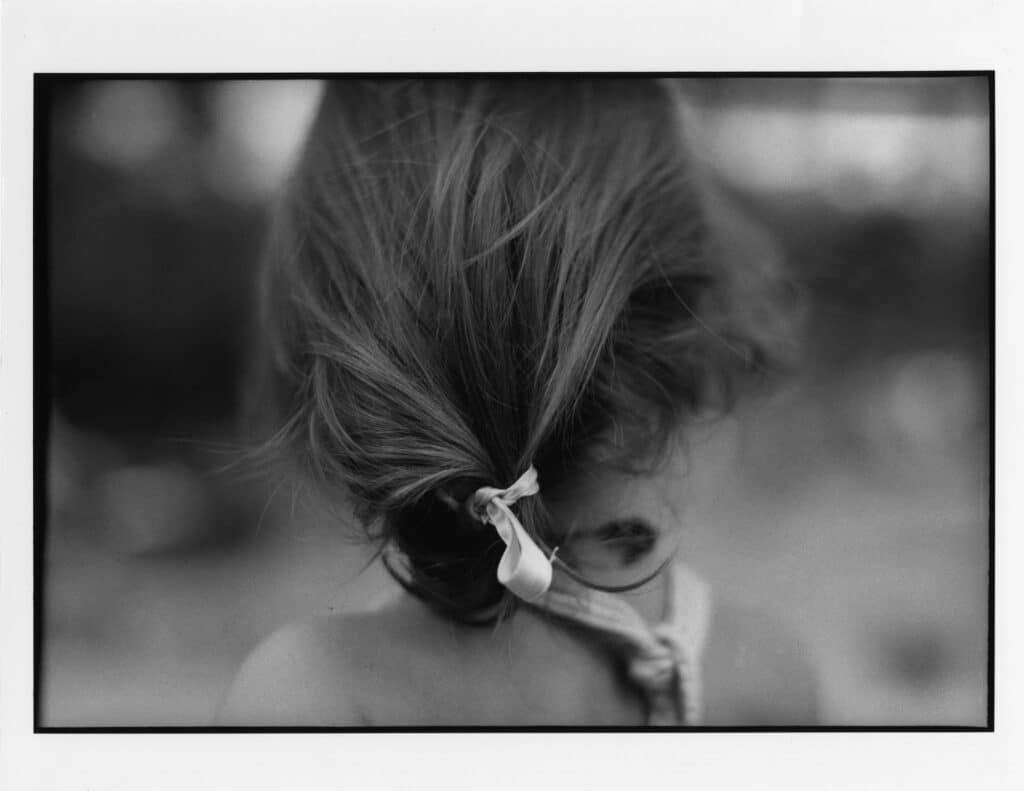
We also found dozens of anthologies of Japanese art, such as a series published in 1932 by Seibundo, and a few collected works, including one about “the decadent Suzuki and Oka” 7 and another on “eccentric, non-conformist Japanese artists.” 6 Leiter owned books on Japanese motifs and ceramics, including the work of Ogata Kenzan; art from the Momoyama and Edo eras; kakejiku and Japanese noh plays; and Japanese carpentry, architecture, 7 and design (including the amusing title How to Wrap 5 Eggs: Japanese Design in Traditional Packaging).
There were a few books of haiku as well, and classics of literature such as The Life of an Amorous Woman, The Sketch Book of the Lady Sei-Shonagon, and Diaries of Court Ladies of Old Japan. There was also a copy of The Book of Tea by Kakuzō Okakura, signed by Saul’s great love, Soames (Bantry): “To a truly sincere and long abiding lover of tea.” (though Leiter was quite the Balzacian coffee drinker, too…) And just one photobook: A History of Japanese Photography (1840-1945). 8
It is worth noting that most of these books were written in Japanese, a language that Leiter did not speak or read, which exemplifies his fondness and admiration for Japanese culture. One book in his collection stood out: the catalogue of an exhibition on Hon’ami Kōetsu, the Renaissance calligraphy master, organized by the Philadelphia Museum of Art. Saul dedicated it to his dear friend Margit (Erb), and saved a critique of the show by Robert Hughes—“The Subtle Magic of Kōetsu,” a title that suits Leiter himself beautifully.9
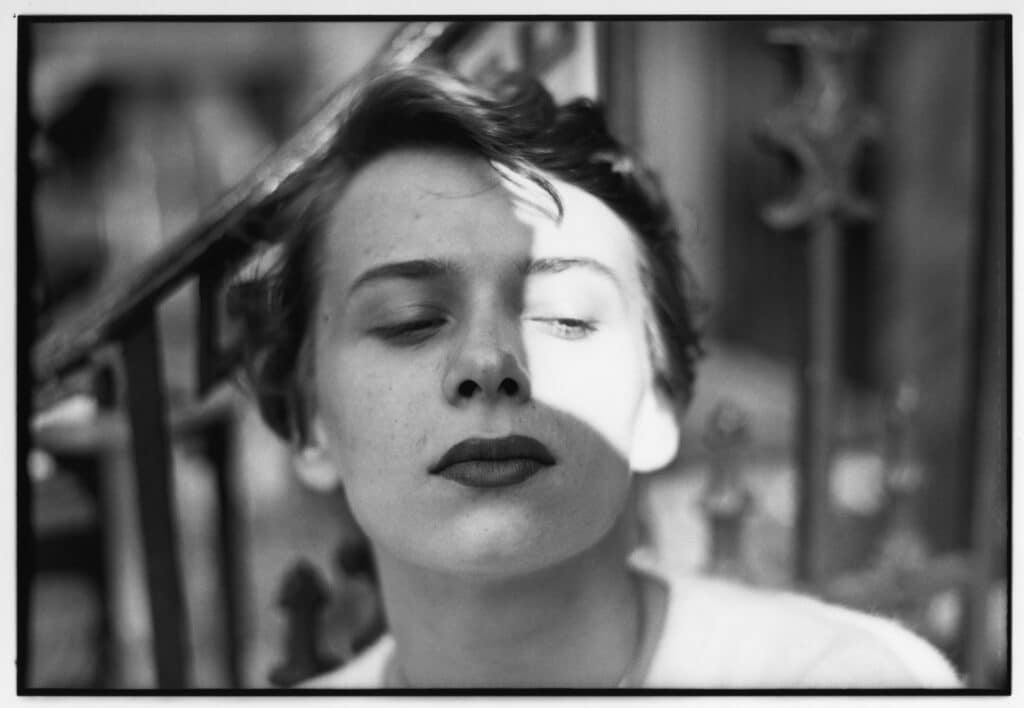
Finally, there were a few books related to Buddhism and Zen, and a copy of Edo Satirical Verse Anthologies by R.H. Blyth, x in which Leiter added his initials, “SL,” to the opening quote that reads: “Dedicated to Daisetz Suzuki, who taught me not to teach.” That sentence evidently spoke to Leiter, a man who chose to be an artist rather than a preacher. Through painting and photography, he transcended the theological nature of his upbringing and ended up becoming another kind of spiritual leader.
Commenting on the unusually large swathes of color (often black, or lacquer red) typical of Saul Leiter’s photographs, the Japanese photo historian Kōtarō Iizawa evoked the notion of “ma” (間, “space” in Japanese, both physical and temporal): the negative space, the absence of matter—that is, the nothingness where, in fact, everything happens. Leiter was very conscious of the meaningfulness in those visual gaps. In many of his color images, the absence or quasi-invisibility of the subject is what creates the visual tension, like a human trace behind a fog-covered window, through scaffolding, or between boards.
Cartier-Bresson, a Buddhist himself, would often refer to Zen in the Art of Archery, a book by the German philosopher Eugen Herrigel published in 1953 with an introduction by the same D. T. Suzuki, a great thinker who played a very important role in spreading Zen beyond Japan.
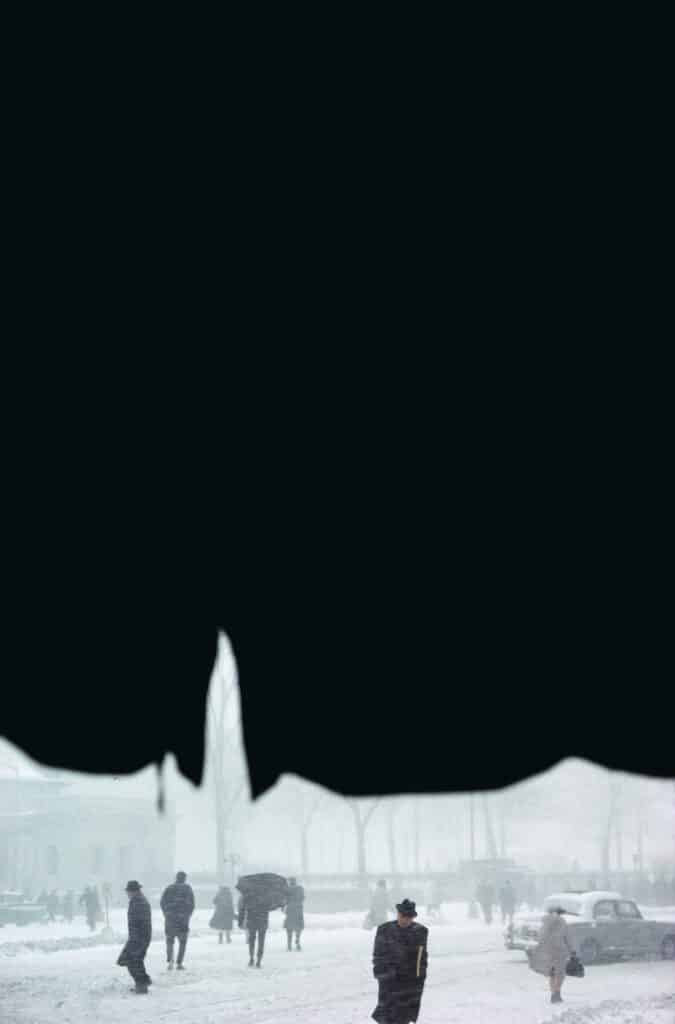
This analogy between Kyūdō and photography is essential in both Cartier-Bresson’s and Leiter’s work: the focus, and the letting-go. Leiter and Cartier-Bresson were both painter photographers who shared a love of Bonnard and ukiyo-e. Cartier-Bresson used to say that photography was like a sketchbook, and painting like a meditation.
The two men never met, although Leiter did photograph Cartier-Bresson “HCB style,” on the fly, in 1959, when the French photographer was shooting in New York City’s Chinatown (he was too intimidated to approach him.) Leiter actually photographed very much like Cartier-Bresson did in the 1930s: with no other intention than to capture a fleeting moment of beauty. They were both very modern men, but they also had the intellectual depth and bohemian ways of 19th-century artists.
Unlike Cartier-Bresson, who turned to photojournalism after the Second World War, Leiter always remained a pure observer, an apolitical eye. That isn’t to say that he didn’t care about the world—he actually cared very much. But it seems that he also lived in accordance to major Zen principles: not attaching any great significance to himself or to his art, and having no defined purpose or intent in life except for being present to the world, always highly aware of its fleeting beauty. No preaching, just looking.
New York, February 2017
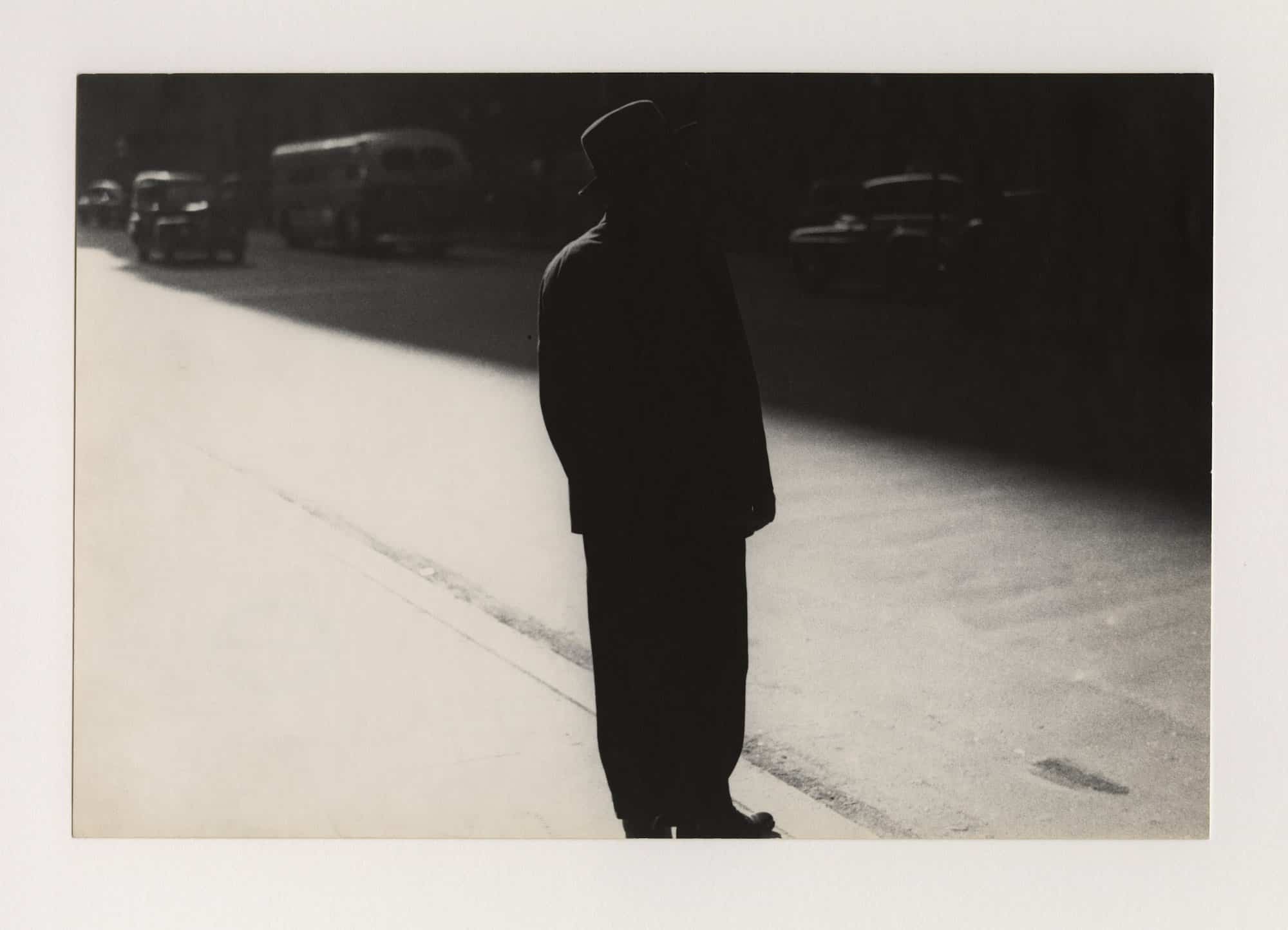
This text is an edited version of the essay published in All About Saul Leiter on the occasion of Saul Leiter’s first exhibition in Japan, curated by Pauline Vermare, organized with the Saul Leiter Foundation and Masako Sato (Contact agency, Tokyo) at the Bunkamura Museum, Tokyo (April 29 – June 25, 2017)
1 In Sam Stourdze, Agnes Sire, Saul Leiter, exhibition catalogue, Paris/Gottingen: Fondation HCB/ Steidl, 2008
2 Leete’s Island Books, 1977
3 “Photographers Speak” interview with Dean Brierly, April 22, 2009
4 Margit Erb, talk at the SVA, New York, March 15, 2016
5 The Decadents: Suzuki and Oka (Kodansha International, 1969)
6 Extraordinary Persons: Works by Eccentric, Non-Conformist Japanese Artists of the Early Modern Era (1580-1868) in the collection of Kimiko and John Powers (Harvard University Art Museums, 1999)
7The Way of the Carpenter: Tools and Japanese Architecture (Weatherhill, 1991)
8 Heibonsha/Japanese Photographers Association (1971)
9 Time, October 23, 2000, an enthralled critique of the show on view then at the Philadelphia Museum of Art
10 Hokuseido Press, 1961

